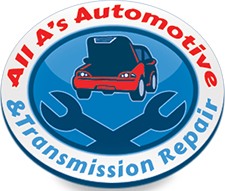Uneven Tire Wear: Understanding Causes and Corrections

 Many drivers experience uneven tire wear. It simply means that the tire tread wears unevenly – either on an individual tire or over all four tires as a unit. Uneven tire wear can compromise vehicle performance and safety and lead to premature tire replacement. Benjamin Franklin said, “An ounce of prevention is worth a pound of cure.” Understanding the causes of uneven tire wear can help you prevent it. Let’s discover how uneven tire wear can be caused by wheel alignment, tire pressure, and infrequent tire rotations.
Many drivers experience uneven tire wear. It simply means that the tire tread wears unevenly – either on an individual tire or over all four tires as a unit. Uneven tire wear can compromise vehicle performance and safety and lead to premature tire replacement. Benjamin Franklin said, “An ounce of prevention is worth a pound of cure.” Understanding the causes of uneven tire wear can help you prevent it. Let’s discover how uneven tire wear can be caused by wheel alignment, tire pressure, and infrequent tire rotations.
What Causes Uneven Tire Wear?
Uneven tire wear is a common issue that many drivers deal with regularly. Understanding the causes can help you minimize uneven tire wear and extend the lifespan of your tires. Many of these causes can be minimized with regular inspections (by yourself or auto technicians). A few of these causes require professional maintenance or replacement.
- Improper Wheel Alignment: When your wheels are misaligned, it may cause your tire tread to wear in an uneven pattern. You will notice this as excessive tread wear on the inside or outside of the tires.
- Incorrect Tire Pressure: Over-inflated or under-inflated tires may cause uneven wear patterns. Excessive tire wear can be seen in the center or along the edges of the tire tread.
- Worn Suspension Components: Worn suspension components can cause the tires to wear unevenly. Worn-out bushings, ball joints, or shocks/struts can create excess movements in the suspension system, increasing tire wear.
- Infrequent Tire Rotations: Front tires tend to show tire wear faster than rear tires due to the additional engine weight, steering forces, and braking. To promote even tire wear, rotate your tires at regular intervals. Tire rotation involves moving the tires from one position to another (i.e., front to back or diagonally) to ensure that wear is distributed evenly across all four tires.
- Driving Habits and Road Conditions: Aggressive driving, fast acceleration, hard braking, and taking corners at high speeds may cause excessive tire wear. In addition, poor weather, rough roads, and debris can cause tire damage and premature tire wear.
How To Correct Uneven Tire Wear
Correcting and preventing uneven tire wear can save you money with little effort. You can perform some of these simple steps with a few inexpensive tools. Others require an appointment with your local auto technician.
Routine Maintenance
All auto manufacturers have a recommended routine maintenance schedule for each vehicle they sell. You can find this information in your owner’s manual. The time and mileage intervals may vary from model to model. It is important to follow these guidelines to maintain your vehicle’s performance and safety standards.
- Schedule a wheel alignment service with a qualified service station.
- Monitor and maintain tire pressure monthly.
- Replace worn suspension components when necessary.
- Rotate tires at the manufacturer’s recommended intervals.
- Adjust driving habits to ensure smooth and even wear – reduce speed, drive conservatively, and avoid driving in bad weather when possible.
- Replace old and worn tires
Auto Service in Midland, MI
While some causes of uneven tire wear can be handled through routine maintenance and simple adjustments, please don’t hesitate to seek professional guidance when necessary. We offer complete automotive services for foreign & domestic automobiles at All A’s Automotive & Transmission Repair in Midland, MI.
Schedule Uneven Tire Wear Service
Call us when your vehicle needs a diagnostic service or to address uneven tire wear, wheel alignment, tire pressure, and tire rotations. Our experienced technicians will work hard to find the correct solution for your needs.
Call us at (989) 631-4672 or visit our website to make your appointment online.
Posted in: Tires & Wheels
Leave a Comment (0) ↓
